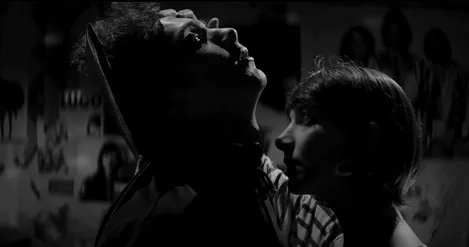
Vampire Myths from Around the World, and What They Have in Common
This content contains affiliate links. When you buy through these links, we may earn an affiliate commission.
This piece on vampire myths from around the world for World of Fantasy Day is sponsored by Kingdom of Copper by S.A. Chakraborty.
 In Daevabad, djinn summon flames with the snap of a finger, blood can be dangerous as any spell, and a clever con artist from Cairo will alter the fate of a kingdom in the thrilling sequel to THE CITY OF BRASS. As Nahri carefully navigates life in the dangerous royal court, Ali has been exiled and must rely on the frightening abilities gifted to him by unpredictable spirits in order to survive. A new century approaches, but as the djinn gather for celebrations, a threat brews unseen in the desolate north, one that seeks the aid of an ancient warrior trapped between worlds.
In Daevabad, djinn summon flames with the snap of a finger, blood can be dangerous as any spell, and a clever con artist from Cairo will alter the fate of a kingdom in the thrilling sequel to THE CITY OF BRASS. As Nahri carefully navigates life in the dangerous royal court, Ali has been exiled and must rely on the frightening abilities gifted to him by unpredictable spirits in order to survive. A new century approaches, but as the djinn gather for celebrations, a threat brews unseen in the desolate north, one that seeks the aid of an ancient warrior trapped between worlds.
In the western world, we’re mostly familiar with the Dracula-esque vampire. The man with the deathly pale skin. The guy with the sharp white teeth and the long fingernails. The sexy one who drinks the blood of unsuspecting victims, whose sexiness is contagious. The one who sleeps in his coffin every day and fears all that is Holy. But these things do not always a vampire maketh. For the purposes of this historical jaunt, I’m narrowing down these qualities to supernatural beings who drink blood, specifically. The other rules vary based on time and region.
 Let’s get into Dracula by Bram Stoker a little: we know the basics detailed above, but some interesting elements that we forget when we update that character is his repulsive sexiness. He’s gross, but his teeth are so white, so straight, so sharp, so PHALLIC. Yep: he’s irresistibly disgusting, which makes him dangerous. The fear of this vampire is also a metaphor for xenophobia, in particular Orientalist xenophobia, which is a trope that carries over into much of the western world’s popular culture.
If you’re a vampire fanatic, you probably already know that much of the lore about vampires in Transylvania at the time referenced Vlad the Impaler’s bloodthirsty war tactics. He was so relentless, much of history says, that people of the time and place assumed he must be evil, and drink the blood of his victims.
Let’s get into Dracula by Bram Stoker a little: we know the basics detailed above, but some interesting elements that we forget when we update that character is his repulsive sexiness. He’s gross, but his teeth are so white, so straight, so sharp, so PHALLIC. Yep: he’s irresistibly disgusting, which makes him dangerous. The fear of this vampire is also a metaphor for xenophobia, in particular Orientalist xenophobia, which is a trope that carries over into much of the western world’s popular culture.
If you’re a vampire fanatic, you probably already know that much of the lore about vampires in Transylvania at the time referenced Vlad the Impaler’s bloodthirsty war tactics. He was so relentless, much of history says, that people of the time and place assumed he must be evil, and drink the blood of his victims.
 Most of us recognize Dracula as the original western-world-made vampire, but many think that the novella Carmilla by Joseph Le Fanu is its prototype. The fundamental lore is very similar, but the main difference is Carmilla’s gender. Dracula’s brides are described similarly physically, but Carmilla’s main victim is a young woman with whom she’s obsessed. This novella was also published during the Victorian era, and like pretty much everything for that time period, vampirism symbolized sex. The lesbianism present in Carmilla is one layer that adds to its taboo at the time.
Most of us recognize Dracula as the original western-world-made vampire, but many think that the novella Carmilla by Joseph Le Fanu is its prototype. The fundamental lore is very similar, but the main difference is Carmilla’s gender. Dracula’s brides are described similarly physically, but Carmilla’s main victim is a young woman with whom she’s obsessed. This novella was also published during the Victorian era, and like pretty much everything for that time period, vampirism symbolized sex. The lesbianism present in Carmilla is one layer that adds to its taboo at the time.
 Before Carmilla, Jewish folklore identifies Lilith as Adam’s first wife. Unlike Eve, she was created from the same clay as the first man, and the myth goes that she left Adam after she would not be subservient to him. She is commonly regarded as a demon, most often a succubus who rapes men at night, but many renditions of her myth also say that she sucks the blood of infants. She is sometimes anthropomorphic, with talons for feet. And she is sometimes also recognized as a barren woman who eats children out of jealousy. Though her orientation is heteronormative, the inversion of common motherly instincts is one aspect of what makes her horror specific—you might even notice a common prey between Lilith’s story and that of Lucy from Bram Stoker’s Dracula.
Before Carmilla, Jewish folklore identifies Lilith as Adam’s first wife. Unlike Eve, she was created from the same clay as the first man, and the myth goes that she left Adam after she would not be subservient to him. She is commonly regarded as a demon, most often a succubus who rapes men at night, but many renditions of her myth also say that she sucks the blood of infants. She is sometimes anthropomorphic, with talons for feet. And she is sometimes also recognized as a barren woman who eats children out of jealousy. Though her orientation is heteronormative, the inversion of common motherly instincts is one aspect of what makes her horror specific—you might even notice a common prey between Lilith’s story and that of Lucy from Bram Stoker’s Dracula.
 Contemporary Iran—or rather, Iranian American director Ana Lily Amirpour—updated the idea of the female vampire for her film A Girl Walks Home Alone at Night in 2014. And rather than make this vampire evil and bloodthirsty ALONE, the Girl also embodies a vigilante justice in the way she chooses her victims. Unlike Dracula, though, we have none of the Christian mythology that keeps our contemporary vampire at bay. In fact, in the seemingly Godless society, we have very little rules for her existence at all, except for that she only comes out at night.
Contemporary Iran—or rather, Iranian American director Ana Lily Amirpour—updated the idea of the female vampire for her film A Girl Walks Home Alone at Night in 2014. And rather than make this vampire evil and bloodthirsty ALONE, the Girl also embodies a vigilante justice in the way she chooses her victims. Unlike Dracula, though, we have none of the Christian mythology that keeps our contemporary vampire at bay. In fact, in the seemingly Godless society, we have very little rules for her existence at all, except for that she only comes out at night.
 The novel Let Me In by John Ajvide Lindqvist was adapted to film in 2006, and it features an adolescent love story, except that one of the protagonists is a vampire who was castrated when they were transformed, and the other is a bully who exhibits psychopathic tendencies. The vampire (Eli) also has manipulated a pedophile into committing the serial murders for them, and draining the bodies of their blood so that Eli can survive. With the current cultural interest in true crime, all of these elements of horror merge to a truly terrifying narrative. The novel also reminds the reader of the Atlas Vampire Murderer and the Vampire of Sacramento, both real-life killers who drank the blood of their victims.
This list is by no means exhaustive. It merely points out some commonalities among some folklore and popular cultures related to vampire mythology. What are some of your favorites that aren’t featured here? Let us know in the comments!
The novel Let Me In by John Ajvide Lindqvist was adapted to film in 2006, and it features an adolescent love story, except that one of the protagonists is a vampire who was castrated when they were transformed, and the other is a bully who exhibits psychopathic tendencies. The vampire (Eli) also has manipulated a pedophile into committing the serial murders for them, and draining the bodies of their blood so that Eli can survive. With the current cultural interest in true crime, all of these elements of horror merge to a truly terrifying narrative. The novel also reminds the reader of the Atlas Vampire Murderer and the Vampire of Sacramento, both real-life killers who drank the blood of their victims.
This list is by no means exhaustive. It merely points out some commonalities among some folklore and popular cultures related to vampire mythology. What are some of your favorites that aren’t featured here? Let us know in the comments!
 In Daevabad, djinn summon flames with the snap of a finger, blood can be dangerous as any spell, and a clever con artist from Cairo will alter the fate of a kingdom in the thrilling sequel to THE CITY OF BRASS. As Nahri carefully navigates life in the dangerous royal court, Ali has been exiled and must rely on the frightening abilities gifted to him by unpredictable spirits in order to survive. A new century approaches, but as the djinn gather for celebrations, a threat brews unseen in the desolate north, one that seeks the aid of an ancient warrior trapped between worlds.
In Daevabad, djinn summon flames with the snap of a finger, blood can be dangerous as any spell, and a clever con artist from Cairo will alter the fate of a kingdom in the thrilling sequel to THE CITY OF BRASS. As Nahri carefully navigates life in the dangerous royal court, Ali has been exiled and must rely on the frightening abilities gifted to him by unpredictable spirits in order to survive. A new century approaches, but as the djinn gather for celebrations, a threat brews unseen in the desolate north, one that seeks the aid of an ancient warrior trapped between worlds.
In the western world, we’re mostly familiar with the Dracula-esque vampire. The man with the deathly pale skin. The guy with the sharp white teeth and the long fingernails. The sexy one who drinks the blood of unsuspecting victims, whose sexiness is contagious. The one who sleeps in his coffin every day and fears all that is Holy. But these things do not always a vampire maketh. For the purposes of this historical jaunt, I’m narrowing down these qualities to supernatural beings who drink blood, specifically. The other rules vary based on time and region.
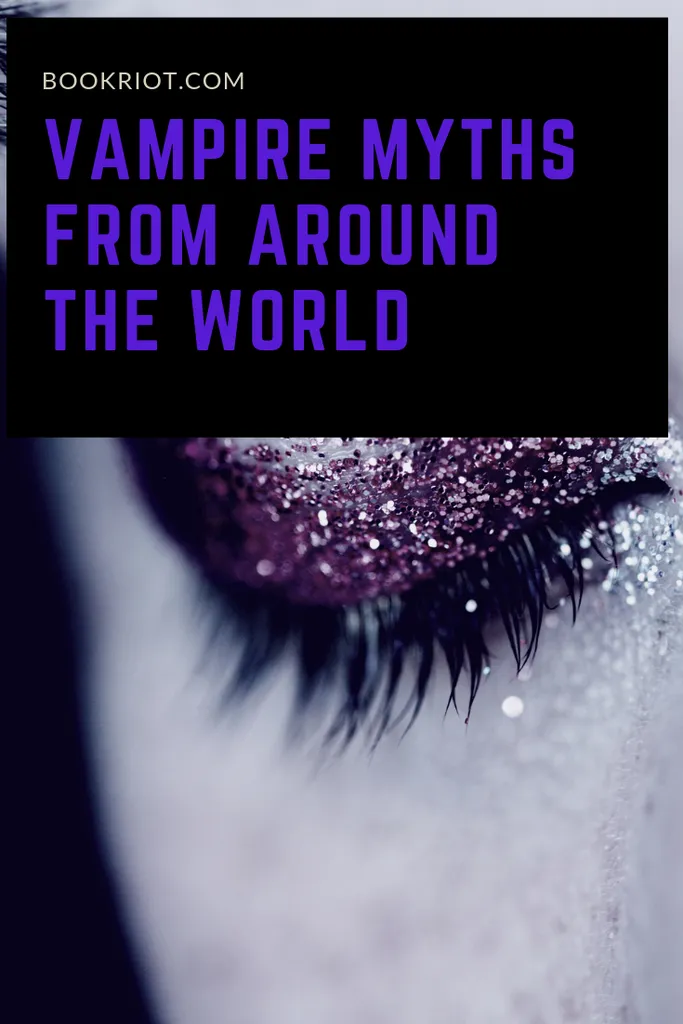
Dracula, Scotland and Romania
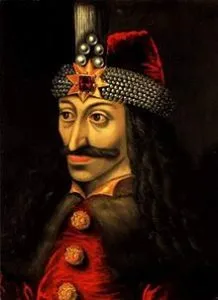
Vlad Dracul, Wallachia, ~1440s-70s,
Carmilla, Ireland
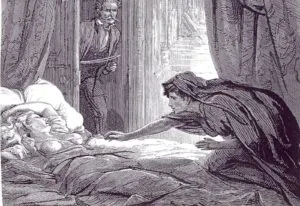
Illustration from Carmilla by Joseph le Fanu, Ireland
Lilith, Hebrew
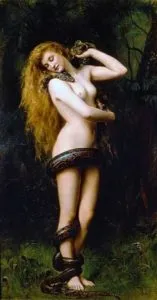
Painting of Lilith by John Collier, 1887
Lamashtu, Revenants, and A Girl Walks Home Alone at Night, Iran
Lamashtu
Even older folkloric beliefs than Lilith originate in Mesopotamia, Persia and modern Iran. Before Lilith, there was the myth of Lamashtu, who was said to also be a cryptid demon. She watched pregnant women as they gave birth and then snatched away the newborn to drink its blood.A Girl Walks Home Alone At Night by Ana Lily Amirpour

A Girl Walks Home Alone at Night, Sheila Vand, Iran, 2014
Revenants
Some of the oldest myths in this region were the revenants, visible ghosts or reanimated humans who stalk the living for their blood. No scholarship I’ve read has told me this, but it seems as though the revenant concept is one precursor to both vampires and ghouls (or what we commonly know as “zombies”). Also, it’s important to note that although this region seems to have been among some of the eldest mythology of the vampire, Mesopotamia is by no means its only origin.Let the Right One In, Sweden

Eli, Let the Right One In, Lina Leandersson, Sweden, 2006
- Fantasy From Around the World in 7 Comics and Graphic Novels
- 15 Slavic-language SFF Novels in Translation
- Tooth and Claw: Werewolf Fiction From Around the World
- The Tomb Raiders, Martial Arts, and Dragon-Horses of Chinese Fantasy
- Beyond LOTR: 4 Epic Fantasy Novels From Outside the UK
- 20 Must-Read African Fantasy Novels
- 6 YA Fantasy Novels By #OwnVoices Authors
- 3 of the Best Fantasy Novels Featuring Urban Settings
- 10 Fantasy Novels From Around the World for Fans of Harry Potter









